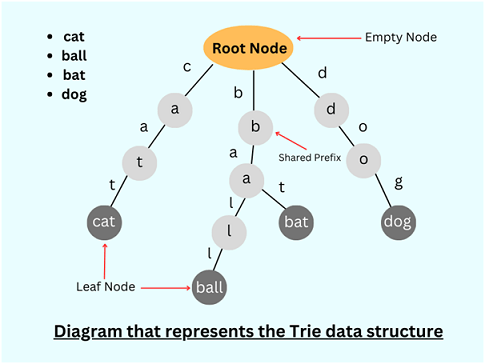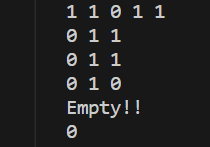Trie Data Structure in C++In this article, we will discuss the trie data structure in C++ with its properties, operations, and examples. Trie data structure is a type of multi-way tree that is used for storing different strings. Each string consists of characters that are stored in a tree-like structure, i.e., Trie data structure. It is also called a radix tree or prefix tree, or digital tree. Basically, the word "trie" comes from the word "retrieval", which means retrieving or getting back something. It is used for various tasks such as spell-checking, searching words, auto-completion, etc. Properties of Trie data structure:There are various properties of the trie data structure. Some main properties of the trie data structure are as follows:
It can store and share a common initial part of a string which refers to the shared prefix. Sharing a common prefix makes it easier to search a set of strings efficiently. 
Operations in a Trie data structure:There are three operations that can be accomplished in a trie data structure: 1. Insert operation: This operation is used to add a new node, i.e., a new string, into the Trie. 2. Search operation: This operation is used to find a specific string and check if it exists in the Trie data structure. 3. Delete operation: This operation is used to remove a string that is present in the Trie data structure. Example:Let's take an example to implement trie data structures in C++ to perform insert, search, and delete operations. Code: Output: 
Explanation of the above C++ program:
Conclusion:In this article, we have understood the Trie data structure, a tree-like structure that stores a collection of strings. It has various applications like word search, spell-check, auto-completion, etc. We have understood the various operations of the Trie data structure, which performs insert, search, and delete operations.
Next TopicDifference between C++ and JavaScript
|
 For Videos Join Our Youtube Channel: Join Now
For Videos Join Our Youtube Channel: Join Now
Feedback
- Send your Feedback to [email protected]
Help Others, Please Share









